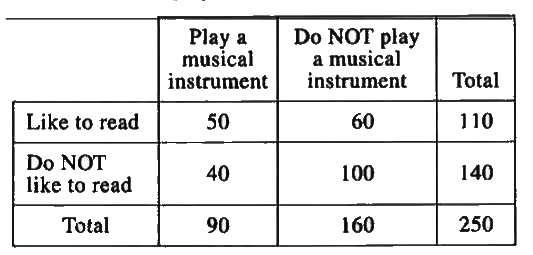Why we use air columns in musical instruments ?
Step-by-Step Solution:
1. Understanding Air Columns:
- An air column is defined as the volume of air contained within a specific space, typically a tube. This air can vibrate and produce sound when disturbed.
2. Role of Air Columns in Musical Instruments:
- In musical instruments, particularly wind instruments like saxophones, mouth organs, and bassoons, air columns are essential for sound production. When a musician blows air into the instrument, the air column vibrates, creating sound waves.
3. Types of Wind Instruments:
- Wind instruments can be categorized mainly into woodwind and brass instruments.
- Woodwind Instruments: These instruments primarily utilize the first few resonances of the air column. The pitch can be altered by opening or closing holes along the sides of the tube, which changes the effective length of the air column.
- Brass Instruments: These instruments utilize a larger number of resonances. They often incorporate valves or slides to adjust the length of the air column, allowing for a wider range of pitches, including lower notes.
4. Pitch Control:
- The pitch of the sound produced by these instruments depends on the length and the shape of the air column. By manipulating the air column (through holes or valves), musicians can ascend or descend in pitch.
5. Conclusion:
- Air columns are crucial in musical instruments because they allow for the production of sound through vibration. The ability to control the pitch through the manipulation of the air column is what makes these instruments versatile and expressive.
- An air column is defined as the volume of air contained within a specific space, typically a tube. This air can vibrate and produce sound when disturbed.
- In musical instruments, particularly wind instruments like saxophones, mouth organs, and bassoons, air columns are essential for sound production. When a musician blows air into the instrument, the air column vibrates, creating sound waves.
- Wind instruments can be categorized mainly into woodwind and brass instruments.
- Woodwind Instruments: These instruments primarily utilize the first few resonances of the air column. The pitch can be altered by opening or closing holes along the sides of the tube, which changes the effective length of the air column.
- Brass Instruments: These instruments utilize a larger number of resonances. They often incorporate valves or slides to adjust the length of the air column, allowing for a wider range of pitches, including lower notes.
- The pitch of the sound produced by these instruments depends on the length and the shape of the air column. By manipulating the air column (through holes or valves), musicians can ascend or descend in pitch.
- Air columns are crucial in musical instruments because they allow for the production of sound through vibration. The ability to control the pitch through the manipulation of the air column is what makes these instruments versatile and expressive.
Topper's Solved these Questions
- WAVESBOOK - ICSECHAPTER - WAVESEXERCISE - Doppler Effect, Musical, Sound, Noise
26 Videos
- WAVESBOOK - ICSECHAPTER - WAVESEXERCISE - Very Short Answer Questions
14 Videos
- WAVESBOOK - ICSECHAPTER - WAVESEXERCISE - Short Answer Questions.
32 Videos
- VECTORS SCALARS ELEMENTARY CALCULUS BOOK - ICSECHAPTER - VECTORS SCALARS ELEMENTARY CALCULUS EXERCISE - UNSOLVED PROBLEMS
79 Videos
Similar Questions
Knowledge Check
Which of the following phenomenon is used by the musicians to tune their musical instruments?
AInterferanceBDiffractionCBeatsDPolarisationThe table below shows the results of a survey of 250 people who were asked whether they like to read and whether they play a musical instrument.

According the the results, what is the probability that a randomly selected person who was surveyed likes to read, given that the person plays a musical instrument?A15B59C511D925A sound is produced by plucking a string in a musical instrument, then
Athe velocity of the wave in the string is equal to the velocity of sound in the stringBthe frequency of wave in the string is equal to the frequency of the sound producedCthe wave in the string is progrressiveDthe tension in the string varies from point to point
Why can't we see air ?
View SolutionHow can you understand pitch and frequency in relation to working of musical instruments.
View SolutionThe frequency of the sound emitted by a musical instrument is 512Hz. The instrument emits plane wave of amplitude 10−4m. Calculate the energy flux, if the speed of sound in air in 332 m/s and the density of air is 1.29kg/m3.
View Solution(A) : UV rays are used for sterilizing surgical instruments in hospitals. (R) : IR rays are used for sterilizing surgical instruments in hospitals.
View SolutionSTATEMENT-1: An open organ pipe can be used as a musical instrument but not a closed organ pipe.
STATEMENT-2: The fundamental frequency of an open orgna pipe is twice the fundamental frequency of a closed organ pipe of the same length.
View Solution
